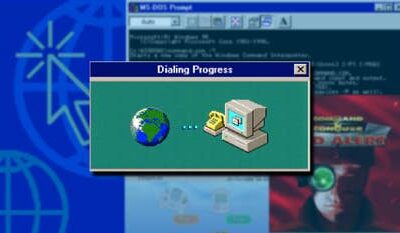Entertainment
Nostalgic Trends from the 80s and 90s That Have Disappeared

The cultural landscape of the 1980s and 1990s was marked by distinct trends that many now view with nostalgia. As society has evolved, several beloved pastimes and technologies have faded from everyday life, leaving behind memories and a sense of longing for simpler times. This article explores seven popular trends from these decades that are no longer part of the modern experience.
VHS Tapes and Blockbuster Video
In the era before streaming services, renting movies meant heading to a local video store. Home entertainment revolved around VHS tapes, which were widely available at chains like Blockbuster. The excitement of browsing aisles filled with the latest releases and classic films was a Saturday night ritual for many families. The last remaining Blockbuster store in Bend, Oregon, now serves as a museum to this bygone era.
Dial-up Internet and AOL
The digital age began with dial-up Internet, a technology that defined online connectivity in the 1990s. Users would hear the familiar sounds of modems connecting, often accompanied by the frustrating wait for pages to load. AOL was a major player in this space, providing millions with their first email addresses and instant messaging capabilities. Today, high-speed broadband has rendered dial-up obsolete, changing how people interact online.
Tamagotchis and Digital Pets
The Tamagotchi, a handheld digital pet, became a global phenomenon in the late 1990s. Children and teenagers took on the responsibility of caring for these virtual creatures, feeding them, and ensuring they remained happy. While digital pets have evolved, the charm of these egg-shaped devices has not been replicated in the same way, making them a cherished memory for many.
Beanie Babies and Collectibles
The craze for Beanie Babies swept through the 1990s, as collectors sought to acquire rare and limited-edition stuffed animals. Initially marketed as toys, they soon became investment pieces, with some selling for thousands of dollars. The market for Beanie Babies has since collapsed, leaving many collectors with items that once held significant monetary value but are now often viewed as nostalgic toys.
Payphones and Public Communication
Once a common sight on street corners and in public places, payphones have largely disappeared as mobile phones became ubiquitous. The convenience of carrying a personal communication device changed how people interact in public spaces. According to the Federal Communications Commission, the number of payphones in the United States has plummeted from over 2 million in the 1990s to fewer than 100,000 today.
CD Players and Physical Media
The transition from physical media to digital formats has transformed how music is consumed. CD players were a staple in homes and cars during the 1980s and 1990s. As digital streaming platforms like Spotify and Apple Music have taken precedence, the need for CD players has significantly diminished, marking a shift in how music is accessed and enjoyed.
Many of these trends evoke a sense of nostalgia and highlight how quickly societal preferences can shift. While some innovations have enhanced modern living, the disappearance of these cultural phenomena reminds us of the unique experiences that defined generations. As society continues to advance, the echoes of the past linger, reminding us of simpler times and cherished memories.
-

 Entertainment2 months ago
Entertainment2 months agoAnn Ming Reflects on ITV’s ‘I Fought the Law’ Drama
-

 Entertainment3 months ago
Entertainment3 months agoKate Garraway Sells £2 Million Home Amid Financial Struggles
-

 Health2 months ago
Health2 months agoKatie Price Faces New Health Concerns After Cancer Symptoms Resurface
-

 Entertainment2 months ago
Entertainment2 months agoCoronation Street’s Carl Webster Faces Trouble with New Affairs
-

 Entertainment2 months ago
Entertainment2 months agoWhere is Tinder Swindler Simon Leviev? Latest Updates Revealed
-

 Entertainment3 months ago
Entertainment3 months agoKim Cattrall Posts Cryptic Message After HBO’s Sequel Cancellation
-

 Entertainment2 months ago
Entertainment2 months agoOlivia Attwood Opens Up About Fallout with Former Best Friend
-

 Entertainment2 months ago
Entertainment2 months agoMasterChef Faces Turmoil as Tom Kerridge Withdraws from Hosting Role
-

 Entertainment3 months ago
Entertainment3 months agoSpeculation Surrounds Home and Away as Cast Departures Mount
-

 World2 months ago
World2 months agoCole Palmer’s Mysterious Message to Kobbie Mainoo Sparks Speculation
-

 Entertainment3 months ago
Entertainment3 months agoMarkiplier Addresses AI Controversy During Livestream Response
-

 Entertainment2 months ago
Entertainment2 months agoITV’s I Fought the Law: Unraveling the True Story Behind the Drama

















